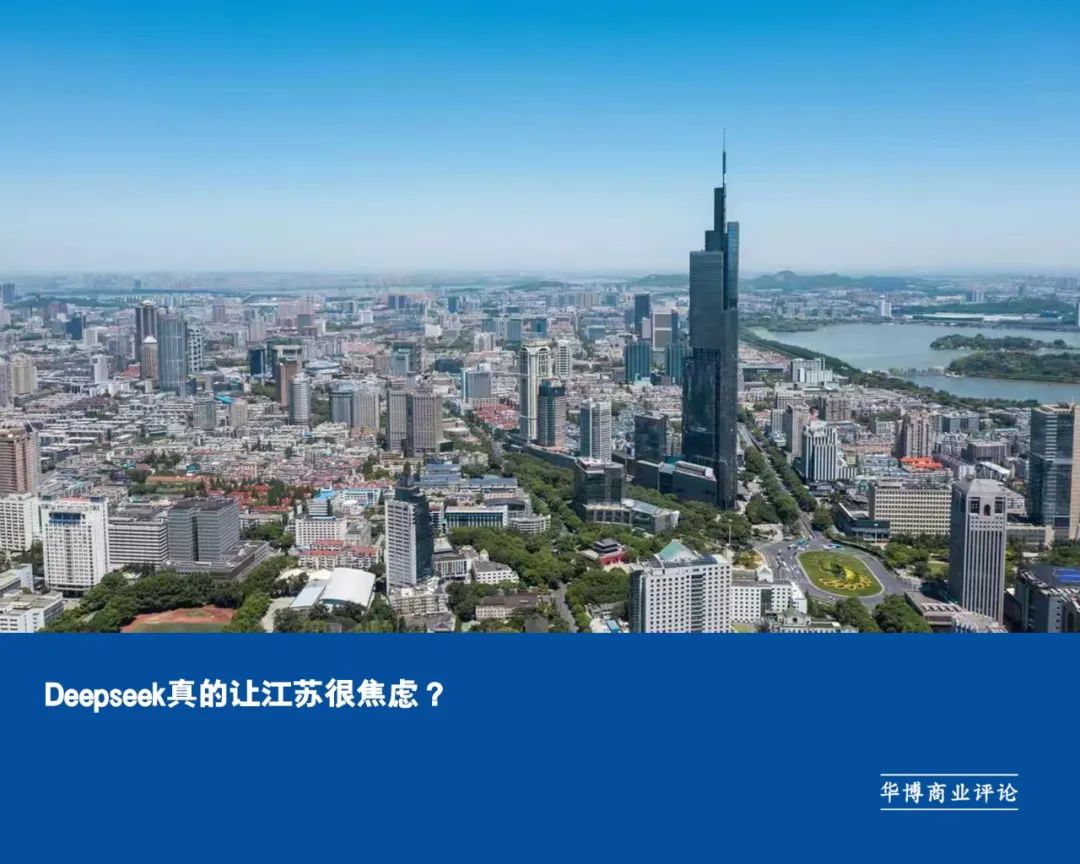Is Deepseek Truly a Source of Anxiety for Jiangsu?
![]() 02/21 2025
02/21 2025
![]() 408
408

Produced by | Huabo Business Review
First came Nanjing's "Three Reflections," followed by Suzhou's unveiling of nine new policies aimed at attracting AI-related talent. Does the rise of Hangzhou's Deepseek truly instill anxiety in Jiangsu?

Nanjing's "Three Reflections"
From the evening of February 7th to the morning of February 8th, the "Intersection Point" platform of Jiangsu Provincial Party Committee's organ newspaper "Xinhua Daily" published three consecutive special articles: "Why is Deepseek Emerging in Hangzhou?", "Why Can't Nanjing Cultivate Its Own 'Six Little Dragons'?", and "If Hangzhou Has Deepseek, What Does Nanjing Have?" Nanjing and Hangzhou share many similarities: both are provincial capitals with rich histories, core cities in the Yangtze River Delta, and comparable in population size and GDP. However, in the technology sector, especially AI, Nanjing seems to lack innovative enterprises with global influence akin to Deepseek.
The article "Why is Deepseek Emerging in Hangzhou?" notes that as the mobile internet dividend waned, Hangzhou proactively shifted to "hardcore innovation," forming a new triangle of "computing power infrastructure - algorithm research and development - scenario implementation," which nourished the rise of enterprises like Deepseek. This innovative ecosystem has propelled Hangzhou to prominence in AI, making it a focal point nationally and globally. Conversely, the article "Why Can't Nanjing Cultivate Its Own 'Six Little Dragons'?" directly compares Nanjing and Hangzhou, delving into Nanjing's shortcomings in urban development, industrial layout, and innovation and entrepreneurship culture. The article contends that Nanjing often serves as a supporting link in the industrial chain, making it difficult to spawn industry-leading "chain master" enterprises. Additionally, Nanjing's low tolerance for failure and youth's lack of aggressiveness hinder the rise of innovative enterprises.
Yet, the article "If Hangzhou Has Deepseek, What Does Nanjing Have?" adopts a different perspective, focusing on the GDP gap between the two cities and arguing that Nanjing is progressing at its unique pace in the technological revolution. It maintains that Nanjing need not fret over "missing the trend" but should adhere to the "long slope and thick snow" approach, maintaining composure amidst industrial cycle fluctuations. Nanjing's strengths lie in its profound historical heritage, abundant scientific research resources, and stable industrial foundation, which underpin its long-term development. Rather than chasing short-term trends, it is wiser to be a stabilizing force, fostering industrial upgrading and innovative development with a steady demeanor.

Suzhou's Nine New Talent Attraction Policies
Unlike Nanjing's introspection, Suzhou's action is more direct, decisively embarking on a "talent competition." At the "AI+" Innovation Development Promotion Conference on February 14th, Suzhou officially announced the "Nine Measures to Promote the Development of Talents in the Field of Artificial Intelligence." This policy encompasses multiple dimensions such as talent introduction, cultivation, evaluation, incentives, and services, implementing nine specific strategies. Its core highlight is the "top-tier support" for leading talents, particularly those at the forefront of AI technology, reaching international standards and mastering core technologies, offering up to 100 million yuan in project funding and 10 million yuan in housing subsidies.
Moreover, Suzhou has launched a series of "personalized" support measures, encompassing experimental facilities, workspace, computing power resource supply, and team structure optimization, aiming to fully cater to talents' needs in the innovation and entrepreneurship process. Hangzhou's successful talent policies are considered crucial in the rise of its "Six Little Dragons." Suzhou's emphasis on a talent strategy is undoubtedly a prudent choice. However, it should also be noted that besides high-end talents, Hangzhou also values ordinary workers. Upon a request from the editor, Deepseek conducted an in-depth comparison of talent introduction policies in Zhejiang and Jiangsu, concluding that both prioritize talents' well-being and innovation autonomy but with differing focuses: Zhejiang emphasizes "broad coverage," while Jiangsu underscores "high-tech and cutting-edge."
Zhejiang focuses on policy inclusiveness and the deep integration of education and technology, attracting middle and high-level talents through gradient subsidies and talent mobility mechanisms. Conversely, Jiangsu targets high-tech and cutting-edge fields, luring top teams with substantial funding and special services. The founders of "Six Little Dragons" enterprises like Liang Wenfeng are indeed elite talents. However, Deepseek's remarkable achievements are not solely attributable to Liang Wenfeng's efforts but also to the concerted efforts of technological elites and ordinary workers. If a region can only attract and retain top figures like Liang Wenfeng but fails to provide a conducive environment for the vast majority of scientific and technological workers and ordinary employees, even Liang Wenfeng's talents may go unrealized. From an economic data perspective, Jiangsu maintains robust development momentum.
In 2024, Jiangsu's GDP ranked second nationally, trailing only Guangdong Province, while Zhejiang ranked fourth. Even in city rankings, Suzhou's GDP outpaces Hangzhou (Suzhou is fifth, Hangzhou is seventh). Thus, it is more accurate to say that Jiangsu is engaging in active self-examination and adjustment rather than experiencing "anxiety." Nanjing's "Three Reflections" and Suzhou's "Nine New Policies" essentially reflect their emphasis on emerging industries and innovation ecosystems. This introspection and action will aid Jiangsu in better leveraging its strengths, addressing its weaknesses, and promoting industrial upgrading in future development.








